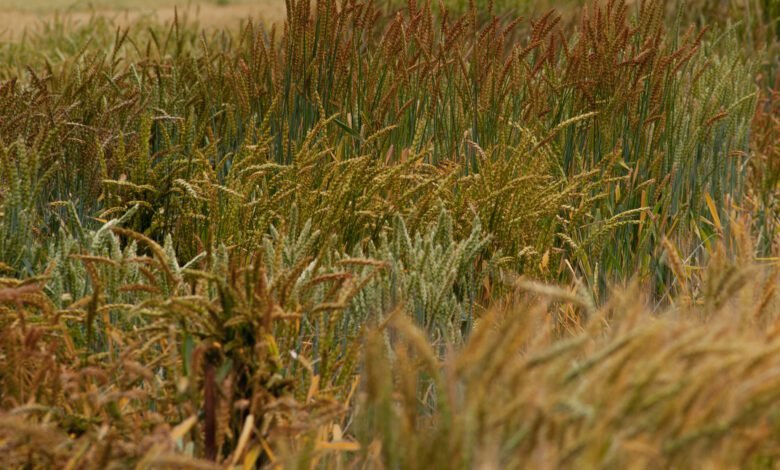Study reveals untapped diversity in historic wheat collection

× close
Watkins landraces in the field. Photo credit: John Innes Centre
A ten-year collaborative study has discovered a huge genetic potential that is untapped in modern wheat varieties. The international study, which was Nature shows that at least 60% of the genetic diversity of a historic wheat collection remains unused. This offers an unprecedented opportunity to improve modern wheat and sustainably feed a growing world population.
To make this discovery, a cross-institutional collaboration led by Dr Simon Griffiths of the John Innes Centre and Professor Shifeng Cheng of the Agricultural Genomics Institute in Shenzhen, Chinese Academy of Agricultural Sciences (CAAS), examined the AE Watkins Landrace Collection, a historical collection of local wheat varieties no longer grown anywhere in the world, and compared them with modern wheat varieties.
This success is the result of a joint effort by the consortium. Cheng says, “We have built a collaborative and complementary consortium with full openness and made resources in germplasm, genomic and phenotypic datasets publicly available through the Watkins Worldwide Wheat Genomics to Breeding Portal (https://wwwg2b.com/). Our efforts have facilitated and accelerated many existing projects in both basic research and breeding practice.”
One of the key factors contributing to the success is the in-depth phenotyping, which included experimental stations in the UK (three sites) and field surveys (five sites) from northern to southern China. In total, 137 traits were examined in this study. This work was particularly supported by Rothamsted Research, which acted as a phenotyping centre to increase the understanding of wheat qualities and traits and to link the crop to the genetic sequence.
The team created a map of genomic variation in wheat, a haplotype-phenotype association map. The comparison between landrace and variety revealed that modern wheat varieties use only 40% of the genetic diversity of the Watkins collection.
The remaining diversity represents a goldmine of potential for improving modern wheat, says Dr Griffiths, group leader at the John Innes Centre and author of the study. “That missing 60% discovered in this study is full of useful genes that we need to feed people sustainably. Over the last ten thousand years, we have tended to select for traits that increase yield and improve disease resistance.
“We found that the Watkins landraces are full of useful variations that are simply missing in modern wheat, and it is imperative to exploit these in modern breeding. The exciting thing is that genes and traits are already being discovered using the data and tools developed over the last decade.”
The AE Watkins landrace collection of bread wheat (Watkins collection), assembled in the 1920s and 1930s from 32 countries, represents the world’s most comprehensive collection of historical wheat.
The collection provides a snapshot of the diversity of cultivated wheat before the advent of modern, systematic plant breeding, and shows how genetic variation is scattered in clusters or ancestral groups around the world.
“We can restore the novel, functional and useful diversity that was lost in modern wheat varieties after the ‘Green Revolution’ in the 20th century and have the opportunity to reinstate them into the elite in breeding programs,” says Professor Cheng.
More information:
Cheng S. et al. The use of landrace diversity strengthens wheat breeding, Nature (2024). DOI: 10.1038/s41586-024-07682-9, www.nature.com/articles/s41586-024-07682-9
Information about the magazine:
Nature



